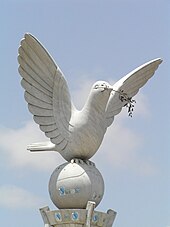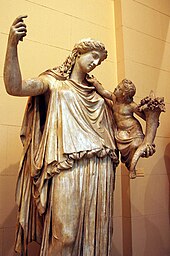
Back Vrede Afrikaans Frieden ALS Paz AN शांति ANP سلام Arabic ܫܠܡܐ (ܫܝܢܐ) ARC سلام ARY سلام ARZ Paz AST Sülh Azerbaijani


Peace is a state of harmony in the absence of hostility and violence. In a societal sense, peace is commonly used to mean a lack of conflict (such as war) and freedom from fear of violence between individuals or groups.
"Psychological peace" (such as peaceful thinking and emotions) is less well-defined, yet perhaps a necessary precursor to establishing "behavioural peace". Peaceful behaviour sometimes results from a "peaceful inner disposition". It has been argued by some that inner qualities such as tranquility, patience, respect, compassion, kindness, self-control, courage, moderation, forgiveness, equanimity, and the ability to see the big picture can promote peace within an individual, regardless of the external circumstances of their life.[2]
- ^
- "UN Logo and Flag". United Nations. Archived from the original on 26 December 2020. Retrieved 10 December 2020.
- "International Day of Peace 2020 Poster" (PDF). UN.org. United Nations. Archived from the original (PDF) on 24 September 2020. Retrieved 10 December 2020.
- ^ Galtung, Johan (31 July 1996). Peace by Peaceful Means: Peace and Conflict, Development and Civilization (1st ed.). Los Angeles: SAGE Publications Ltd. ISBN 978-0-8039-7511-8.